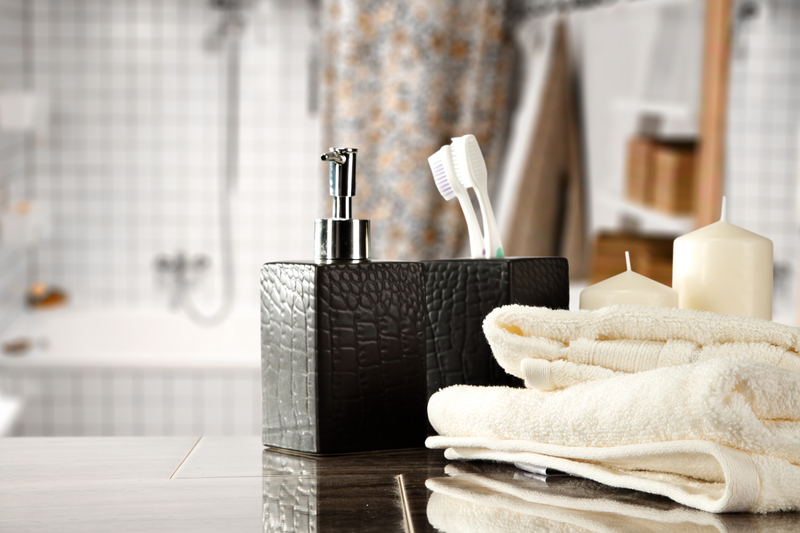Mastering Sofa Storage: Expert Advice for Longevity
Posted on 20/06/2025
Mastering Sofa Storage: Expert Advice for Longevity
If you've invested in a quality sofa, you want it to last for years. Whether you're redecorating, moving, or simply need more space, sofa storage is an art and science. Careless storage can shorten your sofa's lifespan, causing irreversible damage. This comprehensive guide presents professional insight and practical steps for mastering sofa storage. Discover strategies to ensure your favorite couch looks and feels as good as new, even after being in storage for months or years.

Why Proper Sofa Storage Matters
Safeguarding your couch while it's not in active use is crucial for several reasons:
- Prevents physical damage: Including dents, tears, and breakage.
- Keeps upholstery clean: Fights dust, mold, moisture, and pests.
- Retains comfort and aesthetics: Maintains the support and shape of cushions and frame.
- Preserves value: Vital for heirloom or designer pieces.
Optimized sofa storage ensures you avoid costly repairs or premature replacement. Let's explore actionable steps to maximize your sofa's lifespan in storage.
Pre-Storage Preparation: Setting Your Sofa Up for Success
Before you move your sofa into storage, a bit of preparation goes a long way. Proper prep can prevent long-term damage and ease the storage process.
1. Clean Thoroughly
Cleaning is the first and most crucial step. Even invisible dirt or crumbs can attract pests or cause stains during storage. Here's how to deep clean:
- Vacuum: Use the upholstery attachment to get into cracks and crevices.
- Spot-Treat Stains: Use a fabric-appropriate cleaner to remove spills or spots. Let the area dry completely.
- Condition Leather: For leather sofas, use a conditioner to prevent drying and cracking.
Pro Tip: Always allow your couch to dry fully before wrapping or covering. Moisture is the enemy of safe storage!
2. Disassemble (If Possible)
- Remove detachable legs, cushions, or arms.
- Label and bag hardware so reassembly is hassle-free.
- Store cushions separately in breathable bags for best results.
Disassembling reduces pressure on joints and saves space, making for smart and efficient sofa storage.
3. Wrap for Protection
Protect your sofa from dust, pests, and accidental scratches during transit and storage:
- Use breathable covers (like cotton sheets or specially designed sofa covers) instead of plastic. Plastic can trap moisture and promote mold growth.
- Wrap wooden or metal parts with bubble wrap or moving blankets.
Proper wrapping is key to long-term sofa preservation.
Choosing the Optimal Storage Environment
Where you store your sofa is just as important as how you store it. Ideal conditions prevent issues ranging from fabric fading to wood warping.
1. Climate-Controlled vs. Standard Storage
- Climate-Controlled Units: Maintain stable temperature and humidity. Best for leather, antique, or high-value sofas, as extreme weather fluctuations can damage delicate materials.
- Standard Units: More affordable, but with less protection against humidity or temperature changes. Use only if the items are less sensitive or if you'll store them for a short period.
2. Avoid Damp or Sun-Exposed Locations
- Moisture risks: Basements and garages are prone to dampness, which leads to mold, mildew, and wood swelling.
- Sunlight: Prolonged exposure can fade fabrics and dry out leather.
Choose a storage location that is cool, dry, and has minimal exposure to natural light for maximum sofa durability.
Strategically Storing Your Sofa
Once your sofa is cleaned, prepared, and stored in a safe environment, how you physically position the sofa makes a big difference.
1. Store Upright, Never on its Side or Back
- Keep the sofa upright as it would sit in your living room. Storing on its side or back can distort the frame or warp cushioning over time.
- If disassembled, store the largest parts flat to avoid unnecessary pressure on joints.
2. Elevate Off the Floor
- Place pallets or moving pads underneath to keep your couch off potential damp surfaces and allow air circulation.
- This also helps to deter pests and avoid condensation from concrete floors.
3. Maintain Cushion Shape
- Store cushions vertically or away from heavy objects.
- Do not stack anything heavy on upholstery--it can cause lasting indentations.
4. Allow for Airflow
- Leave space around your sofa for ventilation and to prevent mold growth.
- Avoid cramming the sofa tightly against walls or other belongings.
Expert Advice for Preventing Common Storage Pitfalls
Let's review expert tips that address frequent sofa storage mistakes:
- Don't use shrink wrap directly over fabric or leather - it traps moisture, making mold more likely.
- Beware of rodents and insects - avoid storing sofas near food and inspect storage units for signs of pests before storing.
- Check insurance coverage - if valuable, make sure your stored sofa is covered by renter's insurance or that offered by your storage facility.
- Document condition - photograph your couch before storage. This is helpful for insurance claims or resale.
- Monitor over time - if possible, periodically check your stored sofa for early signs of mold, pests, or other damage.
Specific Tips for Different Sofa Materials
All sofas are not made alike! Material-specific storage solutions help ensure longevity:
Fabric Sofas
- Sprinkle baking soda before covering to absorb any lingering odors.
- Ensure complete dryness before storage to prevent mildew.
Leather Sofas
- Apply leather conditioner generously.
- Use only breathable coverings; leather needs air to remain supple.
- Avoid extreme cold or heat, as leather can crack or stiffen.
Wooden Frames
- Wax or oil exposed wood to protect from drying and warping.
- Keep off direct concrete floors; use pallets or pads to elevate.
Long-Term Sofa Storage: Maintenance Matters
If your sofa will be in storage for an extended period, follow these best practices:
- Check periodically: Air the sofa out and re-condition leather or wood every 6-12 months if feasible.
- Re-tighten hardware: When reassembling, check the tightness of all bolts and screws.
- Deep clean before use: After taking out of storage, vacuum, steam, or professionally clean to refresh the sofa.
The Biggest Mistakes People Make with Sofa Storage
To ensure your sofa's longevity, avoid these pitfalls:
- Placing heavy items on top: Can crush cushions and deform the frame.
- Skipping the cleaning step: Stains can become permanent, and odors can develop.
- Using plastic wrap directly on the surface: Causes moisture buildup and mold.
- Poor ventilation: Leads to mildew, particularly in humid climates.
How to Bring Your Sofa Out of Storage
When you're ready for your sofa to return to the spotlight, make it look its best! Here's what to do:
- Remove all coverings and let the sofa air out for at least a day.
- Vacuum and spot-clean as necessary.
- Condition leather or wood.
- Re-attach disassembled parts, checking hardware for integrity.
- Fluff cushions and check structure for any warping or loose joints; repair if needed.
When to Consider Professional Storage Solutions
Storing specialty or high-value sofas? Here's when experts recommend professional storage:
- Antique or heritage pieces: Specialty storage facilities maintain optimal humidity and temperature and offer advanced security.
- Unusual materials: Leather, velvet, or rare woods sometimes require unique environments.
- High-value couches: Professional handlers minimize risk during moving and storage.
Choosing professional storage for sofas ensures peace of mind and preserves both function and value over decades.

Mastering Sofa Storage: A Step-by-Step Checklist
- Thorough cleaning and complete drying
- Disassemble and protect all detachable components
- Use only breathable covers or sheets
- Store cushions separately and upright
- Keep sofa elevated off ground and in an upright position
- Avoid stacking heavy objects atop the sofa
- Choose a cool, dry, pest-free environment for storage
- Check and maintain at regular intervals
Conclusion: Sofa Storage Mastery for Lasting Longevity
With the right preparation and storage environment, your sofa can remain pristine and inviting regardless of how long it spends in storage. Following these expert, proven practices in sofa storage will shield your investment from damage, ensure years of comfort, and preserve its beauty for generations. Don't let improper storage undermine the value and style of your furniture--master sofa storage and enjoy peace of mind with every season of your life.
Whether you're storing a budget-friendly favorite or an heirloom piece, these tips guarantee that your sofa endures and impresses--no matter what the future holds.


